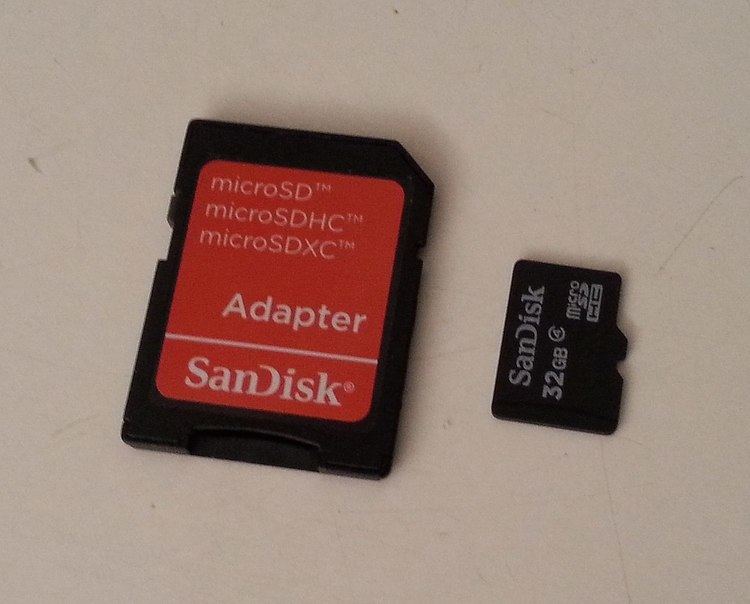 | ||
A memory card, flash card or memory cartridge is an electronic flash memory data storage device used for storing digital information. These are commonly used in portable electronic devices, such as digital cameras, mobile phones, laptop computers, tablets, PDAs , portable media players, video game consoles, synthesizers, electronic keyboards, and digital pianos.
Contents
History
PC Cards (PCMCIA) were the first commercial memory card formats (type I cards) to come out, but are now mainly used in industrial applications and to connect I/O devices such as modems. Since 1994, a number of memory card formats smaller than the PC Card arrived, the first one was CompactFlash later SmartMedia and Miniature Card. The desire for smaller cards for cell-phones, PDAs, and compact digital cameras drove a trend that left the previous generation of "compact" cards looking big. In digital cameras SmartMedia and CompactFlash had been very successful. In 2001, SM alone captured 50% of the digital camera market and CF had captured the professional digital camera market. By 2005 however, SD/MMC had nearly taken over SmartMedia's spot, though not to the same level and with stiff competition coming from Memory Stick variants, as well CompactFlash. In industrial and embedded fields, even the venerable PC card (PCMCIA) memory cards still manage to maintain a niche, while in mobile phones and PDAs, the memory card has become smaller.
Since 2010, new products of Sony (previously only using Memory Stick) and Olympus (previously only using XD-Card) have been offered with an additional SD-Card slot. Effectively the format war has turned in SD-Card's favor.
Overview of all memory card types
Video game consoles
Many older video game consoles used memory cards to hold saved game data. Cartridge-based systems primarily used battery-backed volatile RAM within each individual cartridge to hold saves for that game. Cartridges without this RAM may have used a password system, or wouldn't save progress at all. The Neo Geo AES, released in 1990 by SNK, was the first video game console able to use a memory card. AES memory cards were also compatible with Neo-Geo MVS arcade cabinets, allowing players to migrate saves between home and arcade systems and vice versa. Memory cards became commonplace when home consoles moved to read-only optical discs for storing the game program, beginning with systems such as the TurboGrafx-CD and Sega-CD.
Until the sixth generation of video game consoles, memory cards were based on proprietary formats; later systems have used established industry hardware formats for memory cards, such as FAT32.
Home consoles now commonly use hard disk drive storage for saved games and allow the use of generic USB flash drives or other card formats via a memory card reader to transport game saves and other game information, along with cloud storage saving, though most portable gaming systems still rely on custom memory cartridges to store program data, due to their low power consumption, smaller physical size and reduced mechanical complexity.
